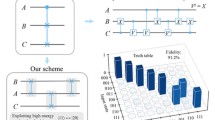Abstract.
Superconducting quantum interference devices (SQUIDs) are very well suited for experimental investigations of ratchet effects. This is due to the periodicity of the Josephson coupling energy with respect to the phase difference δ of the superconducting macroscopic wave function across a Josephson junction. We show first that, within the resistively and capacitively shunted junction model, the equation of motion for δ is equivalent to the motion of a particle in the so-called tilted washboard potential, and we derive the conditions which have to be satisfied to build a ratchet potential based on asymmetric dc SQUIDs. We then present results from numerical simulations and experimental investigations of dc SQUID ratchets with critical-current asymmetry under harmonic excitation (periodically rocking ratchets). We discuss the impact of important properties like damping or thermal noise on the operation of SQUID ratchets in various regimes, such as adiabatically slow or fast nonadiabatic excitation.
Similar content being viewed by others
Author information
Authors and Affiliations
Additional information
Received: 22 November 2001 / Accepted: 14 January 2002 / Published online: 22 April 2002
Rights and permissions
About this article
Cite this article
Sterck, A., Weiss, S. & Koelle, D. SQUID ratchets: basics and experiments . Appl Phys A 75, 253–262 (2002). https://doi.org/10.1007/s003390201326
Published:
Issue Date:
DOI: https://doi.org/10.1007/s003390201326




